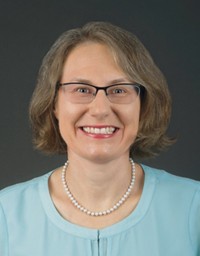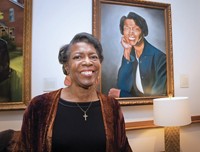Advertisement
Grab your lab coat. Let's get started
Welcome!
Welcome!
Create an account below to get 6 C&EN articles per month, receive newsletters and more - all free.
It seems this is your first time logging in online. Please enter the following information to continue.
As an ACS member you automatically get access to this site. All we need is few more details to create your reading experience.
Not you? Sign in with a different account.
Not you? Sign in with a different account.
ERROR 1
ERROR 1
ERROR 2
ERROR 2
ERROR 2
ERROR 2
ERROR 2
Password and Confirm password must match.
If you have an ACS member number, please enter it here so we can link this account to your membership. (optional)
ERROR 2
ACS values your privacy. By submitting your information, you are gaining access to C&EN and subscribing to our weekly newsletter. We use the information you provide to make your reading experience better, and we will never sell your data to third party members.
People
Percy Julian, The Movie
Upcoming film celebrates the life and career of a pioneering African American chemist
by Linda Wang
October 2, 2006
| A version of this story appeared in
Volume 84, Issue 40

In March 1999, at the spring national meeting of the American Chemical Society in Anaheim, Calif., producers from the television program NOVA dropped in on a symposium celebrating the 100th anniversary of the birth of pioneering African American chemist Percy Lavon Julian (1899-1975). Neither the producers nor the symposium organizers anticipated at that time that the encounter would develop into a long-term relationship.
Now, the product of that initial meeting—a film biography titled "Forgotten Genius" about the life and career of this 20th-century scientist—is scheduled to premier nationally on PBS in February, and ACS is front and center in promoting it.
"This is the single most effective opportunity that ACS has ever had to communicate to the public the message of who chemists are and what they can do," said District I Director Anne T. O'Brien, chair of the ACS Board of Directors' Percy Julian Task Force. She pointed out that NOVA, with 6 million to 7 million viewers, has the largest audience of any science program on television. "This should reach more people than perhaps any other ACS effort."
ACS has been supporting the film since its inception. In 2001, the board approved $102,000 in critical funding to help initiate the filming of elderly Julian colleagues and friends. And at the national meeting last month in San Francisco, the task force held an all-day presidential symposium, sponsored by the Committee on Minority Affairs (CMA), and cosponsored by 14 ACS divisions and committees, to celebrate Julian's life and to raise awareness about the film.
The symposium began with recollections from scientists who had worked with Julian or were intimately connected to his research. For example, Arnold L. Hirsch, president of AgD Nutrition, worked with Julian for 10 years and recounted the evolution of Julian's distinguished career. James C. Letton, retired Victor Mills Research Fellow at Procter & Gamble, described what it was like to work for Julian during the height of his career. Robert Aslanian Sr. of Schering-Plough and former ACS president Ned D. Heindel discussed Julian's contributions to steroid chemistry and the physostigmine synthesis, the latter of which became a National Historic Chemical Landmark (C&EN, May 17, 1999, page 80).
During the afternoon session, Julian's children, Percy L. Julian Jr. and Faith Julian, described how their father overcame prejudice and discrimination and taught them the value of hard work. The producers of the film offered a behind-the-scenes look at how the movie was made. The symposium concluded with a 20-minute sneak preview of the movie.
"The film is an excellent representation of the life and career of Percy Julian," said symposium chair James P. Shoffner, who has been instrumental in moving the project forward. "Since I lived through some of those times, I can vouch for the honesty and integrity of the film."

Joseph S. Francisco, chemistry professor at Purdue University and keynote speaker during the CMA luncheon, told C&EN that watching the excerpt "made a lot of things about this man come alive." He pointed out that a lot of what Julian experienced still exists. "The scenery's different, the context is different, but many African American chemists are still struggling with some of the same issues," he said.
Willie Pearson Jr., professor of history, technology, and society at Georgia Institute of Technology and author of the 2005 book "Beyond Small Numbers: Voices of African American Ph.D. Chemists," agrees. "Despite more than a hundred years of participation in science, there remains very little written about the African American presence in science," he said in his talk during the symposium. "That Julian's story is to be featured on NOVA is a signal moment not only in scientific history but also in American history. A lot of people are not aware of how significant this is."
Shoffner pointed out that the film celebrates not only an African American chemist, but also an industrial chemist. "ACS has not always given its industrial chemists the type of recognition for their contributions and exploits as it should have," he said.
Julian's story will be part of NOVA's "Lives in Science" series, which includes Albert Einstein, Galileo, and Isaac Newton. NOVA wanted its fourth film to be about an African American scientist.
At the 1999 symposium in Anaheim, the producers of NOVA immediately recognized that Julian's story needed to be told. Despite his many achievements in synthetic chemistry, his story is largely unknown. "The reason we chose Julian is that his story had everything that you could want in a television program," said producer Stephen Lyons.
The son of a railway clerk and the grandson of slaves, Julian was born in Montgomery, Ala., on April 11, 1899. He graduated as valedictorian from DePauw University and went on to receive a master's degree in chemistry from Harvard University and a Ph.D. in chemistry from the University of Vienna. After returning to the U.S., he and colleague Josef Pikl achieved the total synthesis of physostigmine, a drug used to treat glaucoma. Despite his achievements, he was denied faculty positions at a number of universities, including DePauw, his alma mater.
Frustrated, he turned to industry, but that, too, led to disappointment. One day, a door opened for him. W. J. O'Brien, a white vice president at Glidden Co. in Chicago, heard about Julian's accomplishments and offered him a position as director of research for Glidden's Soya Products Division. Over the next 18 years, Julian's work led to breakthrough products, including soy protein, which was adopted by the Navy during World War II for fire-fighting foams, and intermediates for the preparation of commercial quantities of synthetic progesterone and hydrocortisone. The latter was a significant advance in the treatment of rheumatoid arthritis.
Discrimination persisted, however. Percy L. Julian Jr. recalled the day someone tried to burn down their home in Oak Park, Ill., and the day a bomb was thrown at their house. His sister Faith said her father never stopped dreaming or believing in himself.
The latter part of Julian's career saw the establishment of Julian Laboratories and subsequently the Julian Research Institute. In 1973, Julian became the first African American chemist to become a member of the National Academy of Sciences. He died of cancer on April 19, 1975.
Julian faced overwhelming obstacles during his life, and so did the NOVA team in telling his story. They quickly realized they had a huge obstacle in front of them: There were no books written about Julian. The only resources they had were a biographical sketch written by Julian's friend Bernhard Witkop of the National Institutes of Health, a Reader's Digest article from the 1940s, a 1993 article by Stu Borman in C&EN, and a few scattered press clippings. "That was it. That was the whole foundation that we had to work with," Lyons said.
"The sensible thing, the smart thing, the sane thing, would have been to wait for the book," he said. "But we were just so compelled by the Percy Julian story that we just swallowed hard and plunged in." NOVA received $120,000 in initial funding from the Camille & Henry Dreyfus Foundation to begin its research.
A second obstacle was that many of Julian's friends and colleagues were elderly. It became a race against time to get their testimonies on tape. NOVA was able to complete the interviews with the help of ACS funding. "That was a critical decision because a number of those people died before we began producing the film, yet their stories live on in the film, and they give the film an immediacy that is extremely unusual for a film like this," Lyons said.
Other supporters that helped make the film a reality include the Alfred P. Sloan Foundation, the National Endowment for the Humanities, and the National Science Foundation. The final cost of the film was $2 million.
By the end, the film crew had interviewed some 60 people in 10 states. Among those were family members, friends, and former students. Lyons pointed out that some interviewees made heroic efforts to participate. One of Julian's students at DePauw, Ed Meyer, could barely walk or hear by the time the crew found him. "Yet he made two trips to a hotel in Chicago to come and talk to me and share his memories of Percy Julian," Lyons said.
Another DePauw graduate and Julian's right-hand man at Glidden, Wayne Cole, was frail, but his mind was amazingly sharp, Lyons recalled. Cole described the processes for handling soybeans that he and Julian developed 60 years ago as if it were yesterday.
Ray Dawson, who worked as an undergraduate with Julian on the synthesis of physostigmine in the 1930s, described in vivid terms the conditions they worked under and the amazing feeling they had when they finally completed the synthesis.
"As a result of all these interviews, we now have more than 2,000 pages of transcripts," Lyons said. He noted that after the broadcast, those transcripts will be donated to an archive of the Julian family's choosing and become a valuable resource for future scholars who want to study Julian's life and career.
The impact of this film on the public remains to be seen, but Shoffner believes it will become a powerful educational tool. He pointed out that public schools around the country are mounting a major effort to incorporate information from the film into their educational programs. "Already I think there are indications of the impact that it will have," Shoffner said.
The task force is hosting a Prescreening Celebratory Event on Jan. 23, 2007, at the National Academies building, in Washington, D.C. The screening is expected to draw some 600 people, including lawmakers, educators, the media, and ACS members and governance. ACS's O'Brien said she hopes attendees will bring word of the film back to their local sections and communities.
In addition, O'Brien said she hopes this collaboration with NOVA opens the door to future projects. She believes that because of this film, the producers have become more interested in chemistry as a subject for NOVA. "It's clear that they are enthusiastic about this project, and it has increased their interest in chemistry," she said.
The film combines real-life testimonies with dramatizations of Julian's life. Tony Award-winning actor Ruben Santiago-Hudson plays Percy Julian. The two-hour special is expected to air nationally on PBS on Feb. 6, 2007, during Black History month.





Join the conversation
Contact the reporter
Submit a Letter to the Editor for publication
Engage with us on Twitter